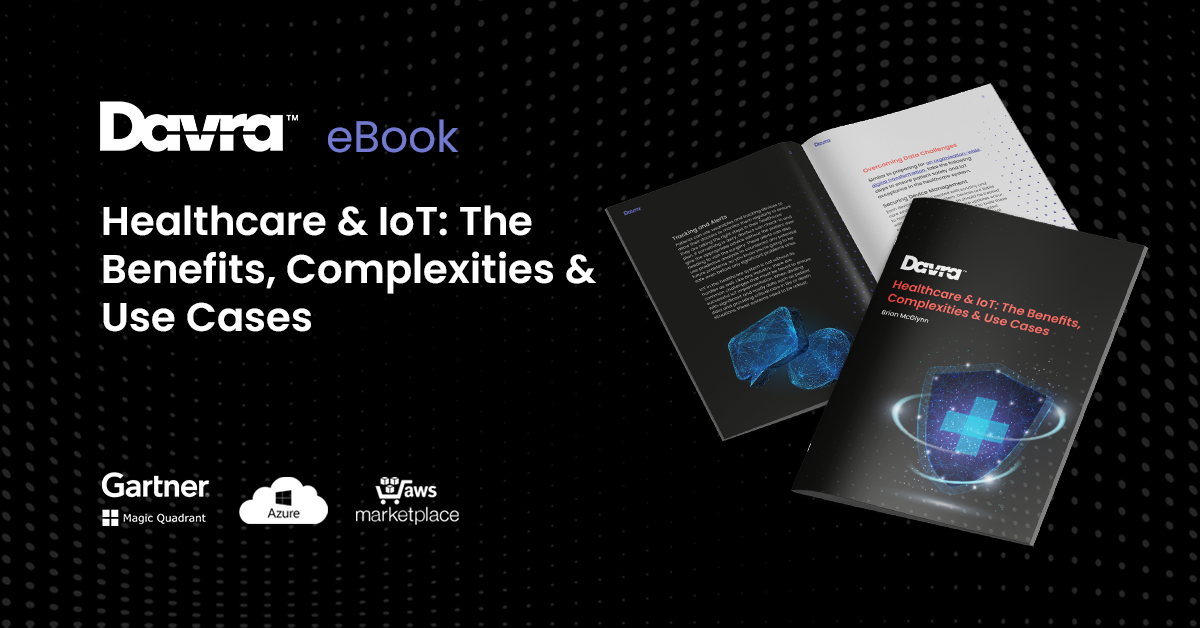IoT in Healthcare Use Cases eBook
Download Your Free IoT in Healthcare Use Cases eBook
Read More


It’s all well and good to connect your devices, set up real-time streaming with the cloud and display any anomalies in an app.
We’ve all been there before; we splash out on a fancy smartwatch because you’ve just taken up running during a lockdown. You see your friends on Strava and you too want to unlock that elusive runner’s high. You buy the watch with all the bells and whistles, only to find you used about 5% of that super-smart watch’s capabilities!
This is often the case with IIoT investments… even though you’re dealing with hundreds, if not thousands of more gadgets, and a much bigger budget! Companies tend to want to keep throwing gadgets until something fits, rather than looking at the overall goals of the project to assess how to get the most value from the investment.
First of all, why should you care about transforming your IoT machine into a high-value data project? Data is fast becoming the way to get ahead in industry, through anticipating volatile future events and analyse how your customers operate, therefore strengthening partnerships and building better products for your customers.
1. Assess Your Tools
Before we get into the crux of data management, it’s important that the information you’re relaying to the end-user, AKA your team members, is in a format that they can understand and draw benefit from.
Because the tools used are key to presenting data to make decisions, the dashboards must be in a readable, understandable format for your team. The outputs should be intuitive and make sense to the team. To achieve this, create a normalised database with clean data to ensure accurate and timely information. Cater to third party integrations and agile toolkits for ease of use and migration down the line.
2. Determine The Data Quality
Quality frameworks are everywhere; there are quality analysts everywhere in the food, pollution and manufacturing worlds. Your data management should be no different.
If your data is of low quality, you may as well not manage it at all because these decisions impact the relationships with your customers, wasted marketing campaigns and an increase in spending. To offset these issues, follow a routine data quality checklist that involves all your employees and team members:
Completeness: ensure that all the required data in the database is in its correct form and that there are no unnecessary blanks.
Validity: Your data should meet the rules specified for this database, for example if the cell requires integers only, then that data should only be of that form. The database should not allow for overrides.
Timeliness: The information should be readily available and for the intended use.
Consistency: A data point and its format should be consistent and reflect that data accurately across the data stores.
3. Create A Rigorous Data Management Lifecycle
Data does not magically combine itself into lovely graphs and patterns for the C-suite, it must be managed from inception through to archiving. Not only is this imperative for companies, but also for GDPR compliance and other regulatory bodies.
In order to build an effective data management lifecycle, you should fill in the what the data looks like and how it acts at each stage, the challenges associated with that stage and how to mitigate the risks the challenges pose.
The lifecycle encompasses the creation, collation, storage, cleansing, processing, retention, archival and purging of data.
4. Look Beyond to the Patterns
When companies first install an IIoT project, they look at factors that are currently undermining the business. For example, the huge costs caused by factory or machine downtime. If an product line is down for 45 minutes due to an electrical fault, that could cost the company thousands.
Developing a predictive maintenance schedule is an amazing feat thanks to IoT, but as organisations progress, it’s imperative that their vision does as well. We might be tracking the machine downtime and predicting when it fails, but how about looking beyond that. Tracking how long a machine is turned on, but not in actual use, could be causing it to fault much sooner. Taking note of these mishaps and norms enables companies to zone in on specific processes they hadn’t paid attention to before, in order to make effective and cost-saving decisions.
Here at Davra, we ensure your data analysis isn’t just an afterthought, or something that affects the system at a later date. We incorporate your vision and need to craft better processes into the IoT strategy from the offset, ensuring you can swiftly tailor your business outcomes to meet new customer needs, or even create new business models from current operations. Please get in touch if you would like to discuss how you can better improve your data process and management today.
Brian McGlynn, Davra, COO
Download Your Free IoT in Healthcare Use Cases eBook

Davra IoT is the only Industrial IoT Platform Available on AWS Marketplace
Read MoreThe Collaboration of Humans & Robots Has Created The Cobot
Read More